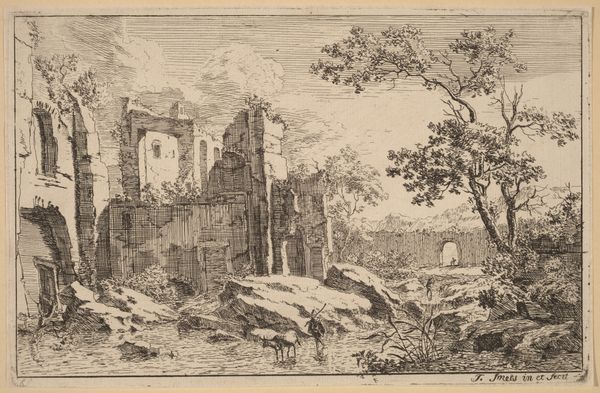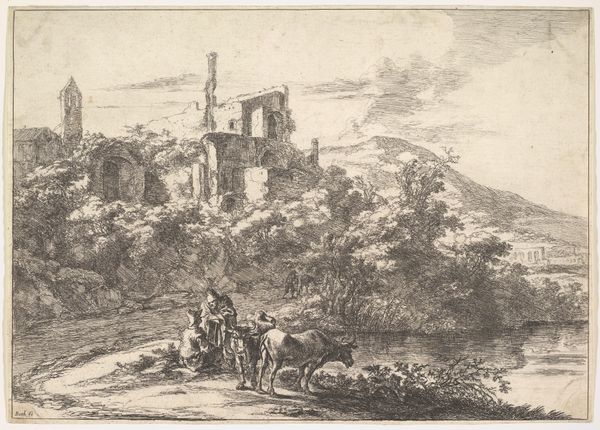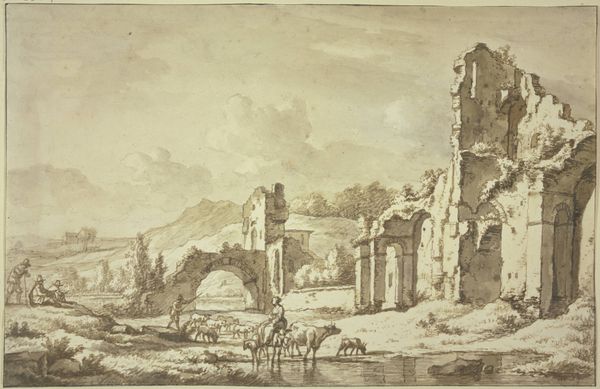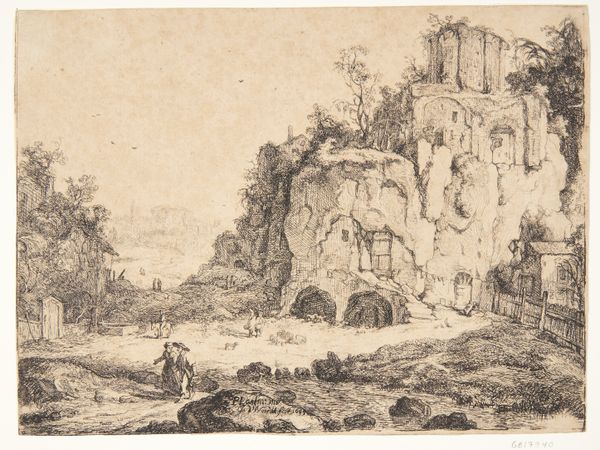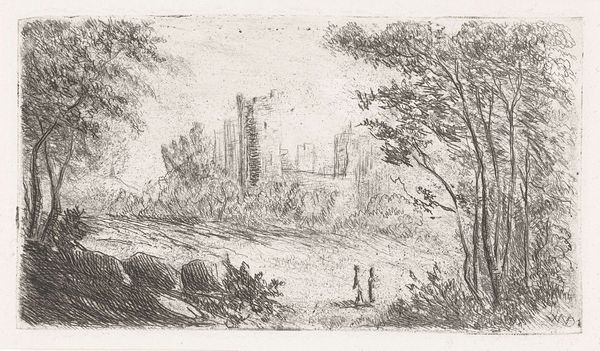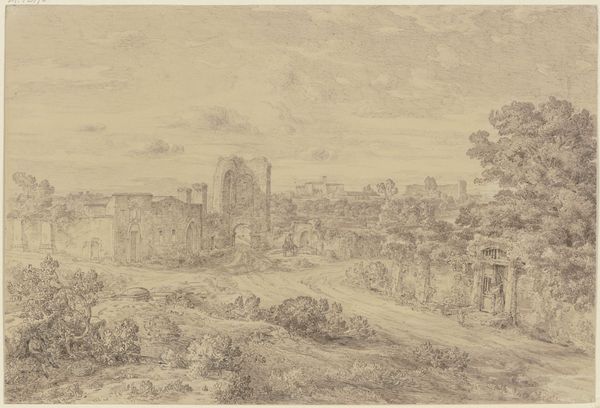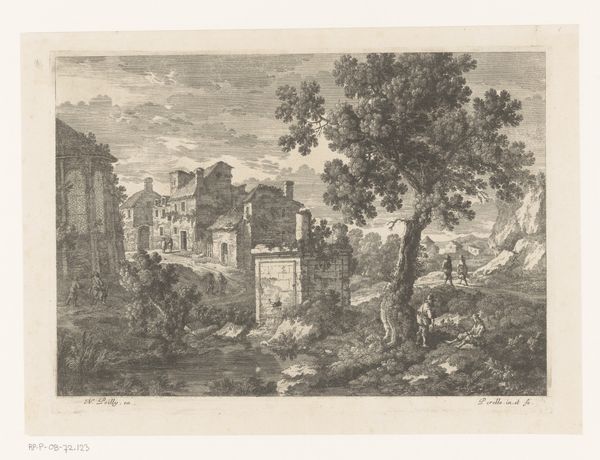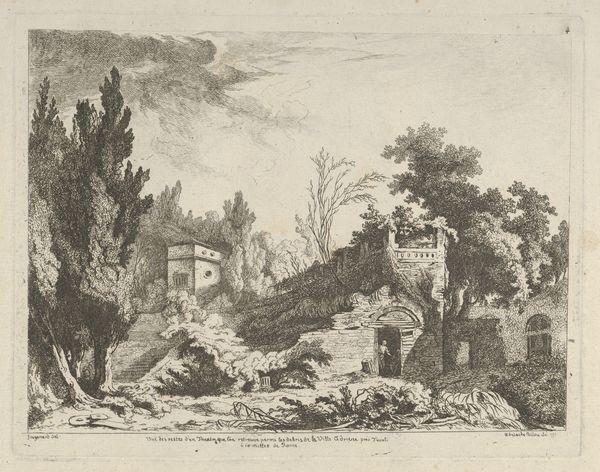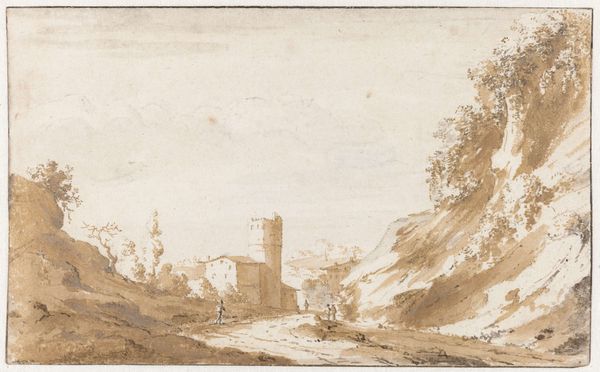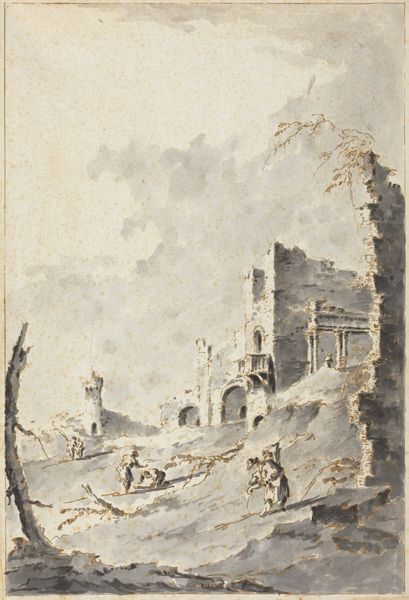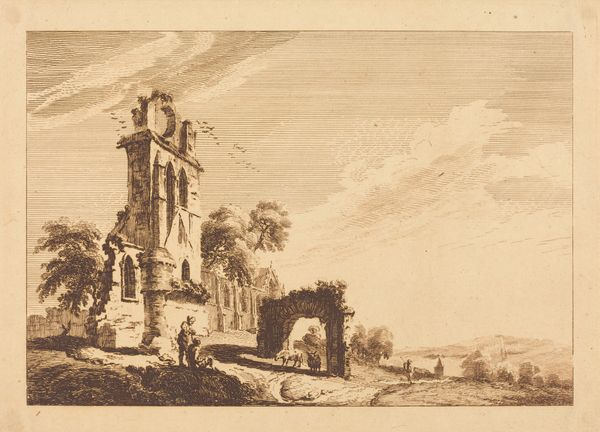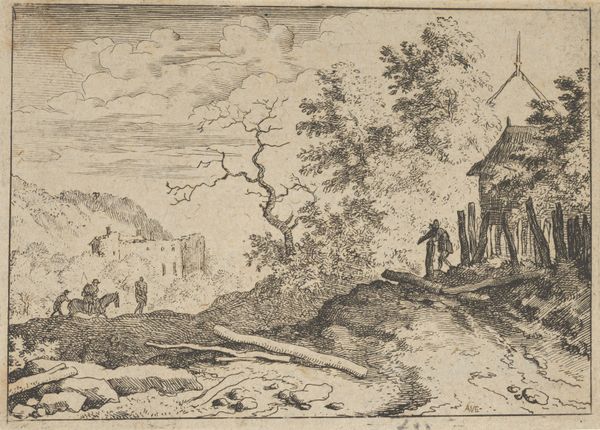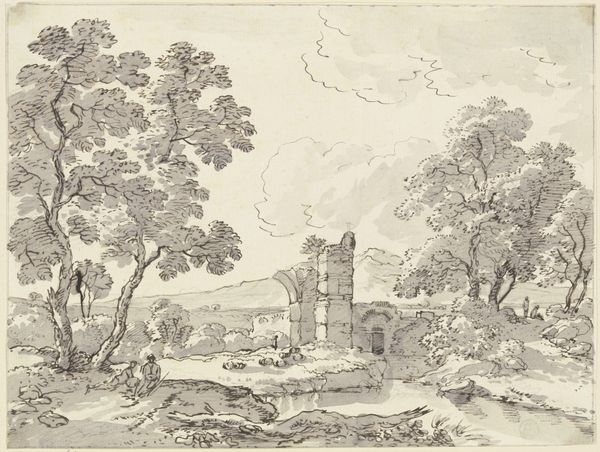
drawing, ink, architecture
#
drawing
#
baroque
#
landscape
#
ink
#
architecture
Copyright: Public Domain
Editor: This ink drawing by Jan Asselijn, titled "Roman Ruins," presents an evocative scene of crumbling architecture amidst a vast landscape. I'm struck by the melancholic mood—these ruins speak of the passage of time and the inevitable decay of even the grandest civilizations. What sort of visual history can you read in the imagery of the piece? Curator: Indeed. Ruins, especially Roman ruins, became powerful symbols in the Baroque era. Think about what Rome represented: law, order, empire. Seeing these structures decaying speaks to the ephemerality of human achievement, but it also acts as a prompt. Notice how the foliage intertwines with the stonework, a visual representation of nature reclaiming what was once civilization. What might that suggest to you about our relationship to the past? Editor: I guess that nature's persistence means there's a continuous cycle, or that history never really disappears completely? The past is literally built into the present? Curator: Precisely. The artist chose ink specifically, lending an antiquarian aesthetic, evoking memories, literally inscribing them onto the viewer’s consciousness. Also note how the architecture seems to dissolve back into the land. Asselijn masterfully suggests a cyclical relationship: civilizations rise and fall, returning to the earth, but the echoes, visual and symbolic, linger. Editor: It's fascinating how a simple landscape drawing can be so rich with symbolic meaning. I now see beyond just the visual decay and perceive the artwork’s deep connections to memory. Curator: Right. What we see are the ruins, but what we feel is the continuity, the echo, the cultural memory embedded within them. That makes looking at art through symbolic imagery, rewarding and engaging.
Comments
No comments
Be the first to comment and join the conversation on the ultimate creative platform.
